UCSBigger
Will the Ambitious Expansion Plan Be a Dream or Spell Disaster for the South Coast?
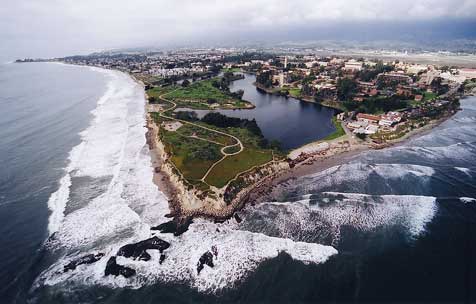
This month, UCSB will almost certainly win approval from the UC Regents to proceed with an ambitious expansion plan that is likely to attract more than 10,000 new residents to the Santa Barbara area. The Long Range Development Plan (LRDP) calls for 5,000 more students, 1,400 more staffers, 300 more professors, and 2.2 million more square feet of building — which will nearly double the academic space — on the existing campus by 2025.
Next week, on September 7, both the Goleta City Council and the Santa Barbara County Board of Supervisors will consider whether to officially support UCSB’s plan. The public is invited to speak at these two hearings on Tuesday, offering everyday citizens one of their last chances to give input on the plan, which has been making the rounds for more than three years. (The next opportunity to speak is when the UC Regents meet in San Francisco on September 14.)
To bring the community up to speed on the hopes and fears for UCSB’s LRDP, The Independent provides this special report.
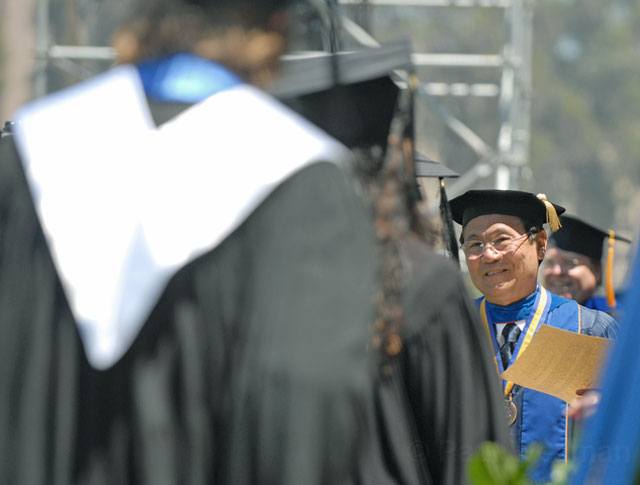
Chancellor Yang’s Legacy
In 1994, Henry Yang was hired from Purdue University, where he had been dean of engineering, to be the fifth chancellor of UCSB. His assignment was to move the institution up the academic ranks, and he quickly succeeded: Five Nobel Prize winners now call the campus home, and UCSB, according to recent reports, is the ninth best public university in the country and the 32nd best in the world. In pursuing community support for the LRDP, Yang is now hoping to win approval for what could become his greatest legacy.
The UC Regents require that each of their 10 campuses produce a long-range plan every 15 or 20 years. Yang and his administration began working on this LRDP more than a decade ago. The plan not only proposes a tremendous increase in onsite housing but also calls for sweeping pedestrian passageways and structural details that will architecturally unify a campus that has developed in a notoriously rag-tag fashion since it was established in 1945 on a former Marine Corps Air Station.

The process began with a “strategic academic plan,” explained Vice Chancellor Gene Lucas, because many departments “felt that they had not grown to their optimum size to reach their full academic potential.” Meanwhile, the UC Regents were tasking the university system with accommodating 50,000 more admissions over the next 15 years. UCSB officials believed they could handle 5,000 of them, growing at roughly 1 percent annually, which is in line with the projected growth rate for Santa Barbara. Included in that 5,000 is 1,380 new graduate students.

The next step was designing a campus plan that reflected these academic needs and determined which old buildings could be replaced and where new ones could sprout up. With those basic ideas on paper, it became show-and-tell time to the community, which Lucas and Marc Fisher, UCSB’s associate vice chancellor for campus design, began doing more than three years ago.

All told, the administration has already made more than 60 presentations, evidence of Yang’s strong focus on town-and-gown relations. “We do not act unilaterally, without talking to — and more importantly, listening to — our friends and neighbors in the community,” explained Yang.
But as the only UC campus fully inside the state’s coastal zone, UCSB must also submit the plan to the California Coastal Commission. Expected to review the LRDP sometime next year, the Coastal Commission is legendarily strict in its interpretation of the state’s coastal protection laws — unlike the reportedly rubber-stamping Board of Regents — and will take into serious consideration the input of area agencies and watchdogs. “Given the time to get through the Coastal Commission approval process,” Chancellor Yang explained, “we feel there is adequate time to address everyone’s concerns and issues.”
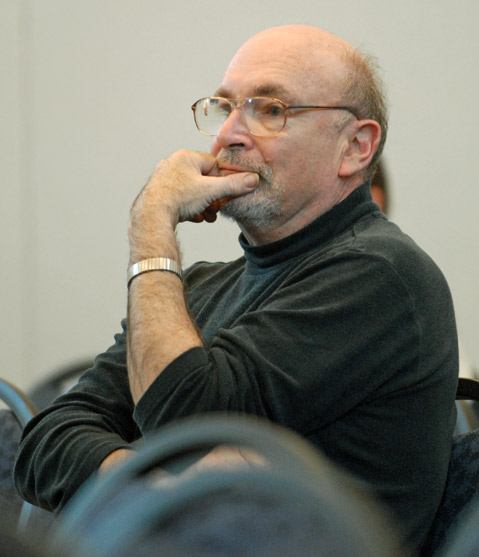
Sustainability: Greening or Greenwashing?
UCSB has long been considered a mecca for eco-minded thinking. So when longtime professor Dick Flacks attended an April 2008 public hearing on UCSB’s LRDP in Isla Vista Theater, he was “struck” by the lackluster turnout. No one from Santa Barbara’s large environmental community seemed to be keeping tabs on the region’s biggest planning process, so Flacks — then an active member of the Santa Barbara County Action Network (SBCAN) — cofounded Sustainable University Now (SUN), which is pushing the green envelope as far as it can with the LRDP and has helped activate the environmental and sustainable communities within the UCSB campus and the region at large.
“This is not an attempt to stop the university from what it wants to do,” said Flacks, who appreciates UCSB’s need to expand and believes Yang sincerely wants to have good community relations. Instead, Flacks contended, SUN just wants to help UCSB do it right and ensure that the sustainability measures aren’t just a greenwashing of a massive development scheme. What’s lacking, SUN worries, are specific sustainability benchmarks regarding such matters as alternative transportation, water, and sewage.
Despite the critiques, the members of SUN believe that they will not have to sue in order to get their demands met, which is what activists did after UCSB’s last LRDP in 1990. Flacks said that UCSB has offered to extend the period in which a lawsuit can be filed against the LRDP from 30 days after the UC Regents’ approval to six months, although Yang would not confirm as much.
Yang did, however, say that his discussions with SUN have been “positive and productive,” explaining, “Not only do we expect that we will be able to reach a collaborative agreement, but we are also hopeful that, as a whole, SUN will publicly support our LRDP.”
At the end of the day, SUN just wants to make sure that the UCSB expansion is worth it for the everyday citizen. Said Flacks, “If the community has to pay a price for this growth — say in water supplies or traffic or air pollution — it needs to know that price is worth it for the advancement of the human race, not just prestige.”
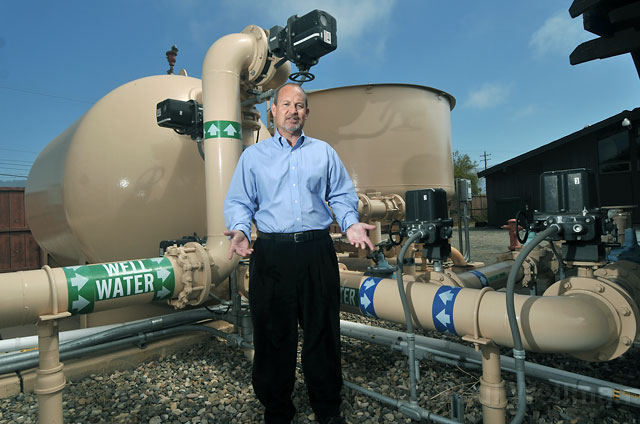
Water: Not Enough?
One of the most serious concerns regarding the LRDP has been raised by the Goleta Water District. In an early phase of planning, the district provided UCSB with water estimates it believed could accommodate the expansion. However, after the recent election of a more sustainably minded board and the hiring of a more cautious manager, the district sent UCSB a 38-page letter explaining why the original data was wrong. The letter, as well as another sent to the Regents this week, contends that UCSB was not only underestimating the campus’s future usage but was overestimating — and, frankly, incorrectly calculating — the future supply. The current water board now believes UCSB’s expansion is liable to exhaust the available water supply in the entire Goleta Valley.
The new district manager, John McInnes, who graduated from UCSB with a degree in environmental science in 1986, questions UCSB’s claim that there will be no net increase in water usage. Goleta Water District Boardmember Lauren Hanson, who’s trying to make sure the district is “prudent and cautious with water supply,” worries that UCSB may try to rely on State Water, which she said would be irresponsible because State Water is already over subscribed.
‘The university is essentially a very large developer who wants to come in and add a small town on top of what’s already here. … Almost anyone concerned about anything can be concerned about UCSB.’ — Lauren Hanson, Goleta Water Board
UCSB did not respond directly to these charges, but officials said they are continuing to reduce potable water usage, replacing existing plumbing fixtures with ones that use very little or no water, proud that 90 percent of the campus is irrigated with reclaimed water, and are in talks with the district to use reclaimed water for toilets. Plus, explained Yang, if there’s not enough water, the LRDP dictates that UCSB “shall halt further development … so that water demand remains within the available supply.”
Still, Hanson was concerned when, at one meeting, a UCSB administrator said he hoped the university would not be held to a higher standard than other Goleta Water District customers. So Hanson came up with her own questions for UCSB: “You’re the self-proclaimed sustainability campus. You’re the ones who need to prepare your students for the future of global climate crisis. Shouldn’t you be holding yourself to a higher standard?”
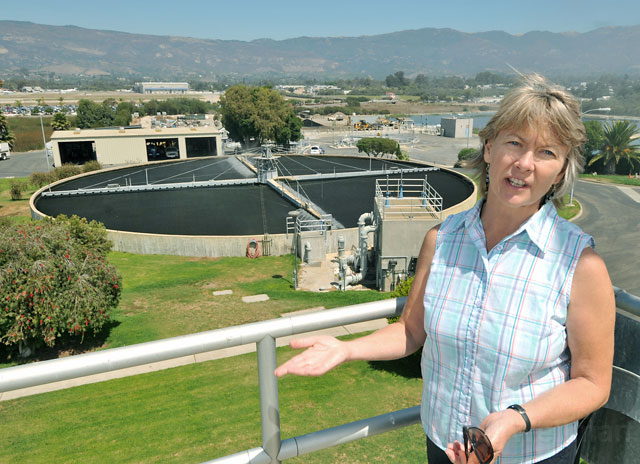
Sewage: Too Much?
There’s only so much sewage that the Goleta Sanitary District’s wastewater treatment plant can handle, and UCSB admits that, by 2025, the expansion may be generating more poop, pee, and sink and shower water than the system can handle. UCSB’s announced solution? Simply pursue a permit for more capacity, since the Regional Water Quality Control Board told UCSB, “[T]here do not appear to be any restrictions or impediments to increasing the permitted capacity of the treatment plant in an amount sufficient to serve full build-out of the LRDP and projected cumulative growth.”
But it may not be that simple. “They make it sound easy, but it isn’t,” said the Goleta Sanitary District’s laboratory supervisor Kathleen Werner, because the plant’s entire infrastructure is built around handling a specific amount of flow. Complicating matters further is that the treatment plant is already six years into a 10-year, $50-million upgrade that will allow secondary treatment of the entire 9-million gallons of capacity. (Currently, the plant can only run 4-million gallons through the secondary process each day, although about 5 million arrives at the plant on average. The overflow receives a primary treatment before being jettisoned into the ocean.) “We’re at the point that if we aren’t full secondary by 2014, we start getting fined some outrageous amounts of money,” explained Werner, who said that the LRDP popped onto the district’s radar mid-upgrade. “We were not really able to put a halt to it and redesign the whole plant facilities.”
So could UCSB buy more capacity from other agencies that use the plant, such as Goleta West Sanitary? That’s also unlikely, said Werner. “Any agency would be foolish to sell [their] capacity to the only wastewater treatment plan in Goleta.” It’s possible, however, that UCSB simply might not overextend the plant at full build-out. But as it stands, the sewage issue remains unresolved.
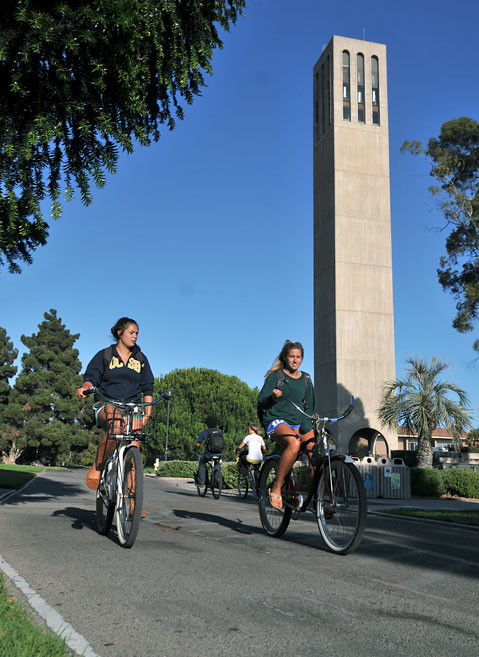
Wheels: Four, Two, or None?
Professor Flacks believes the LRDP’s approach to transportation is “very 20th-century with respect to the automobile.” Weighing in on that problem is Coalition for Sustainable Transportation (COAST). Its executive director, Courtney Dietz, herself a graduate of UCSB’s Bren School of Environmental Science, wants to see freshmen cars banned, bike parking promised for all new buildings, more telecommuting allowed, and classes shifted to off-peak hours.
The administration says the housing plan, which will accommodate all 5,000 of the new students, as well as the additional faculty and staff, is a critical part of the solution. “We believe that building housing adjacent to the campus is the most viable and sustainable approach to reduction of automobile usage,” argues Yang. “We will provide the largest proximate workforce housing program on the South Coast.”
But some question whether or not the university will be able to keep kids from bringing their cars to campus nevertheless. UCSB already has an existing transportation system — Transportation Alternatives Program (TAP) — which was commissioned by Yang in 2004 and is charged with “providing alternative commuting options” for faculty, students, and staff. Many contend, however, that the administration has not put its money where its mouth is.
TAP, according to multiple sources, remains “woefully underfunded,” and its annual reports have been occasionally ignored by the university’s administration. TAP’s board has been complaining for years that the program’s source of funding, which comes from automobile parking fees and fines, is too erratic to depend on and simply not enough money to do what they need to do. Not to mention that the funding arrangement is a bit odd. “That’s kind of a paradox, right?” asked Flacks. “We need automobile use so we can fund against automobile use, too?”
But so far, none of the critics wants a big fight. Dietz, like Flacks, is eager to work with UCSB. “I don’t think anyone in this community can say that the university isn’t a great addition,” Dietz said. “It’s one of the largest employers and a lot of us have worked or graduated from there. But we really just feel that this is an invaluable opportunity for them to step it up and be an environmental leader on sustainability — not just in our community, but for the UC system. And we’re not seeing that with this plan they’ve come up with.”
The same can be said for alternative energy, argued the Audubon Society’s Darlene Chirman, who pointed to the recently passed state law, AB 32, that mandates drastic cutbacks in energy usage. “They say they’re going to meet that although the data is harder to see,” she said. “They don’t have anything specific in the plan. We would like specific promises, such as saying that this particular building would commit to alternative energy.”
UCSB’s administrators deflect the criticism by stating that the LRDP is strictly a land-use document and not meant to address sustainability issues. For those, they direct people to the recently adopted “Campus Sustainability Plan,” which is a “companion document” that “is consistent or bests the goals set by the Regents for the University of California in its policies on green buildings.” The administrators also cite the fact that they are currently spending $20 million on alternative energy projects, setting the record for using less energy per square foot than comparable institutions in California, and that the school is a leader in energy conservation research.
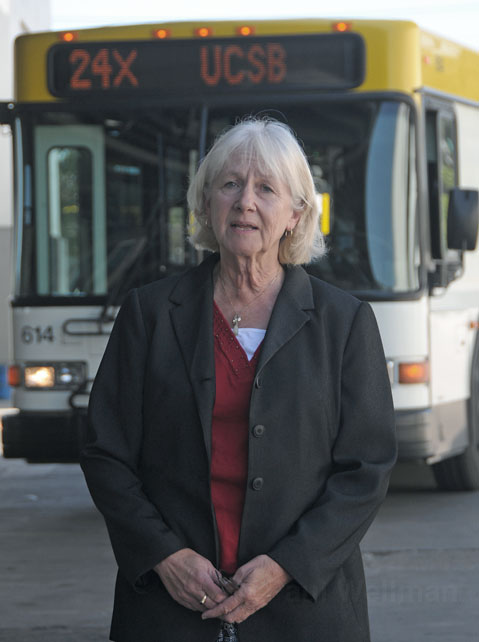
The Bus: Getting Thrown Under?
Few agencies are as freaked out by the expansion as the Santa Barbara Metropolitan Transit District (MTD), which runs the South Coast’s bus system, including six lines that service UCSB. “We can’t wait until the day you’re standing at the street corner and you don’t get a ride to try and beef up service,” said MTD’s manager Sherrie Fisher. She explained that UCSB accounts for more than 10 percent of the system’s 8-million annual trips but that the LRDP claimed there would be no significant impact to bus service. “We need at least a two-year window of time in order to order new vehicles and rearrange our service.”
There is a student registration fee that already kicks $900,000 to MTD each year. At the same time, student ridership has risen 40 percent in just the past year with the current student body. Fisher estimates that the expanded campus will cost $700,000 more annually to keep the service at its current and at times overloaded levels. Of that, $200,000 would come from the registration fee, leaving UCSB with a $500,000 bill. “This amount of money is what we feel is the bare minimum,” said MTD’s Steve Maas.
Until recently, UCSB has remained mostly silent on the matter, although Fisher has heard threats of UCSB starting its own bus service. “We don’t think it’s the way for them to go,” she explained, “but if they choose to do that, we need to know.” That’s because MTD would likely lose the student fees and then have to curtail bus service in parts of the Isla Vista and Goleta communities.
“It’s really a matter of dollars,” said Fisher. “If we don’t have the money, either people won’t be able to get on the bus, which would be very sad, or we have to find ways to move dollars around, and we’re not comfortable moving them from another part of the community.”
After weeks of worry, however, UCSB finally seems to be addressing MTD’s concerns. “Things are looking better,” said Fisher on Monday. “It’s looking like we’re getting attention to the subject. We don’t have any detailed answers yet, but it’s a complex, good discussion.”
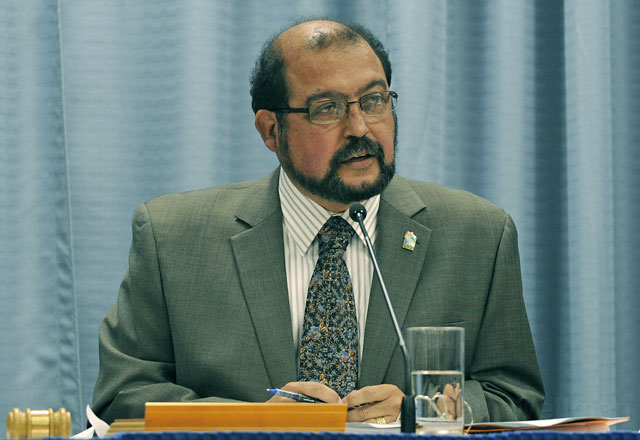
Neighbors: Cultivating Cooperation?
Two jurisdictions will be receiving the bulk of UCSB’s expansion impacts: the County of Santa Barbara, which encompasses Isla Vista and parts of the Goleta Valley; and the City of Goleta, which includes pretty much everything else nearby. Both were initially very concerned with the LRDP, but after months of intense negotiations, both jurisdictions are now optimistic that UCSB will accommodate their concerns, largely because, as Dianne Black, of the county’s Planning and Development department, put it, UCSB administrators have “acted in good faith and have been reasonable in their negotiations and upfront and helpful.”
In general, the agreement amounts to UCSB giving money to both jurisdictions to help pay for impacts. Specifically, the county is negotiating over additional resources for firefighting and law enforcement, and hammering out a “cooperative relations agreement” regarding Isla Vista, particularly with regard to parking, pedestrian and bicycle access, and a number of community programs. Housing is also a concern being addressed in these negotiations, explained Goleta City Manager Dan Singer, including mitigations that cover “pacing of growth with housing so that it doesn’t happen too abruptly.”
Both the city and county are quite concerned about traffic, as the additional 2,170 estimated trips per day seemed like a lowball estimate. Pointing to the intersection of Storke and Hollister roads — but also mentioning all of the other exit and entry points to UCSB that will need to be adapted — Goleta City Councilmember Roger Aceves explained, “It’s incredibly impacted now, and we’re talking about more students going to UCSB. That’s going to require significant improvements.” So, together with UCSB staff, they are developing plans for the expected rise and also for any unexpected rise, should the trips actually be more at full build-out.
And as of press time, it appears such an agreement will indeed be inked on September 7. “I’m confident that at our Tuesday meeting, we’ll have a plan that we can all support,” said Aceves.
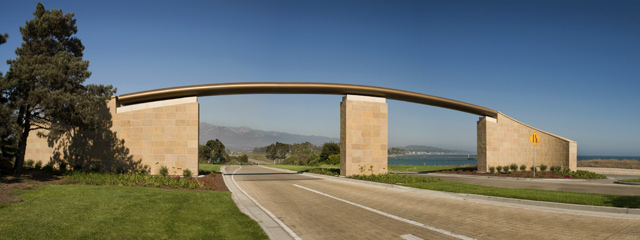
By the Numbers 2010 vs. 2025
Students: 20,000 | 25,000
Grad Students: 2,870 (13 percent of all students) | 4,250 (17 percent)
Faculty: 1,000 | 1,400
Staff: 3,631 | 5,031
Assignable Square Footage*: 2.7 million sq. ft. | 4.9 million sq. ft.
Parking Spaces: 10,580 | 14,230
Playing Fields: 26 acres | 31 acres
Student Beds: 6,700 | 11,100
Student Family Units: 704 | 943
Faculty/Staff Units: 226 | 2,100
* The space available for academic and research use. Does not include hallways, bathrooms, etc.
Here are direct links to some of the documents and websites you may find of particular interest:
UCSB LRDP Homepage (includes 30-minute interview with Gene Lucas and Marc Fisher)



